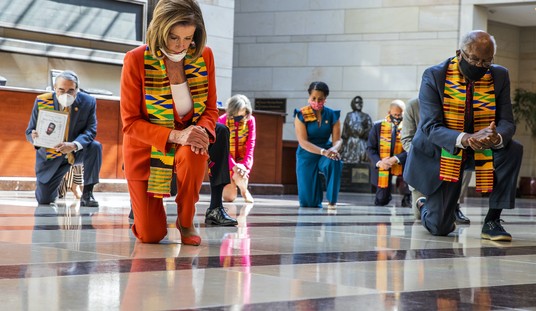This morning’s Gospel reading is Mark 16:15–20:
Jesus said to his disciples:
“Go into the whole world and proclaim the gospel to every creature. Whoever believes and is baptized will be saved; whoever does not believe will be condemned. These signs will accompany those who believe: in my name they will drive out demons, they will speak new languages. They will pick up serpents with their hands, and if they drink any deadly thing, it will not harm them. They will lay hands on the sick, and they will recover.”
So then the Lord Jesus, after he spoke to them, was taken up into heaven and took his seat at the right hand of God. But they went forth and preached everywhere, while the Lord worked with them and confirmed the word through accompanying signs.
Just a few weeks ago, we celebrated Easter, the holiest day of the Christian year. On that day, we celebrate the empty tomb and the resurrection of Christ, the core of our faith and the example for us to follow. Christ’s conquest of death points the way to our salvation and gives us hope that we can enjoy true rest, true salvation, and true joy in the knowledge that the Lord awaits those who chose to be His children.
If that points the way, though, Ascension Sunday confirms it. In today’s Gospel — at least one of today’s Gospels, as there are two different choices of readings today — we come to the end of Jesus’ ministry on Earth. Having been bodily resurrected, Jesus entered heaven in bodily form, being the first to do so. He walked among the disciples and apostles in His consecrated and perfected body first for several weeks, providing us an example of what we hope for in salvation.
This culminates teachings that began with the prophets, especially Ezekiel. After the Lord warned Ezekiel that He would scatter “the dead bodies of the people of Israel before their idols” (chapter 6), He showed the prophet a vision of what He promised (chapter 37). And yet God told Ezekiel of the hope of resurrection:
The hand of the LORD was upon me, and he brought me out by the Spirit of the LORD, and set me down in the midst of the valley; it was full of bones. And he led me round among them; and behold, there were very many upon the valley; and behold, they were very dry. And he said to me, “Son of man, can these bones live?” And I answered, “O Lord GOD, you know.” Again he said to me, “Prophesy to these bones, and say to them, O dry bones, hear the word of the LORD. Thus says the Lord GOD to these bones: Behold, I will cause breath to enter you, and you shall live. And I will lay sinews upon you, and will cause flesh to come upon you, and cover you with skin, and put breath in you, and you shall live; and you shall know that I am the LORD.”
The passage goes on to describe Ezekiel’s vision of the Lord’s Word putting flesh on the bones and restoring them to life. The Lord tells Ezekiel of His message to Israel in this vision:
Thus says the Lord GOD: Behold, I will open your graves, and raise you from your graves, O my people; and I will bring you home into the land of Israel.
This foreshadows the Resurrection, of course, but it also describes Jesus’ mission. He was sent by the Father to “breathe upon these slain, that they may live,” as we continue to be enslaved by sin. Easter was the sign of all signs of what was to come. The Ascension showed its purpose.
It’s not the only such sign in our readings today, depending again on which schedule your parish uses. We also hear about the martyrdom of St. Stephen, the first known martyr of the new church, who was persecuted for his faith. Stephen was of the order of deacons, called to serve the Apostles in their liturgy. In his trial, Stephen has a vision of salvation and resurrection and preaches it to his accusers, who then stone him to death.
Who was it that persecuted and executed Stephen, however? In Acts, Luke identifies him as “a young man named Saul.” Saul of Tarsus would continue to persecute Christ’s church until he had a vision of his own, one that blinded him for three days and converted him from persecutor to apostle. Paul became the church’s greatest theologian and evangelist, accompanied by many, including Luke.
Paul was a great teacher in his words and actions, but his life teaches us something as well. It’s a lesson that the Lord tried to teach us in Ezekiel, and that Jesus preached constantly. Its message is simple: Redemption is at hand for those who repent of their sin. In Ezekiel, the field of dry bones resulted from Israel’s idolatry and faithfulness, and yet the Lord was willing to redeem them and bring them back to life with Him. Jesus taught forgiveness of sins and repentance as His message of love, and returned to demonstrate that the opposite of sin was hope. Paul’s conversion and redemption showed that the Lord would embrace anyone who heard and believed, and repented and atoned for sin.
Christ’s Ascension is our hope, our knowledge of the Lord’s plan for all of us who choose to ascend with Him. We are the dry bones who yearn for the breath of God’s love — and it is never too late for us to embrace it.
The front page image is a detail from “The Ascension” by Pietro Perugino, c. 1495-98, currently on display in the Museum of Fine Arts in Lyon, France. Via Wikimedia Commons.
“Sunday Reflection” is a regular feature, looking at the specific readings used in today’s Mass in Catholic parishes around the world. The reflection represents only my own point of view, intended to help prepare myself for the Lord’s day and perhaps spark a meaningful discussion. Previous Sunday Reflections from the main page can be found here. For previous Green Room entries, click here.








Join the conversation as a VIP Member